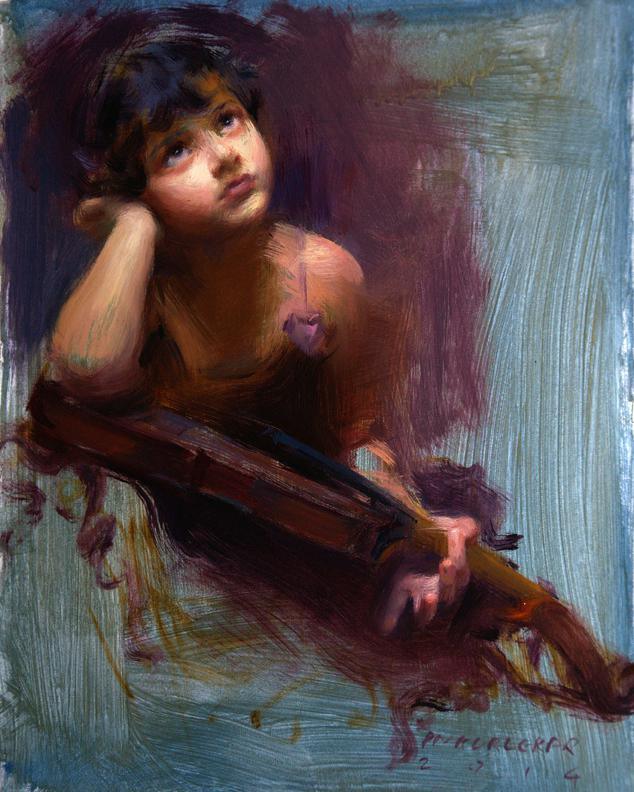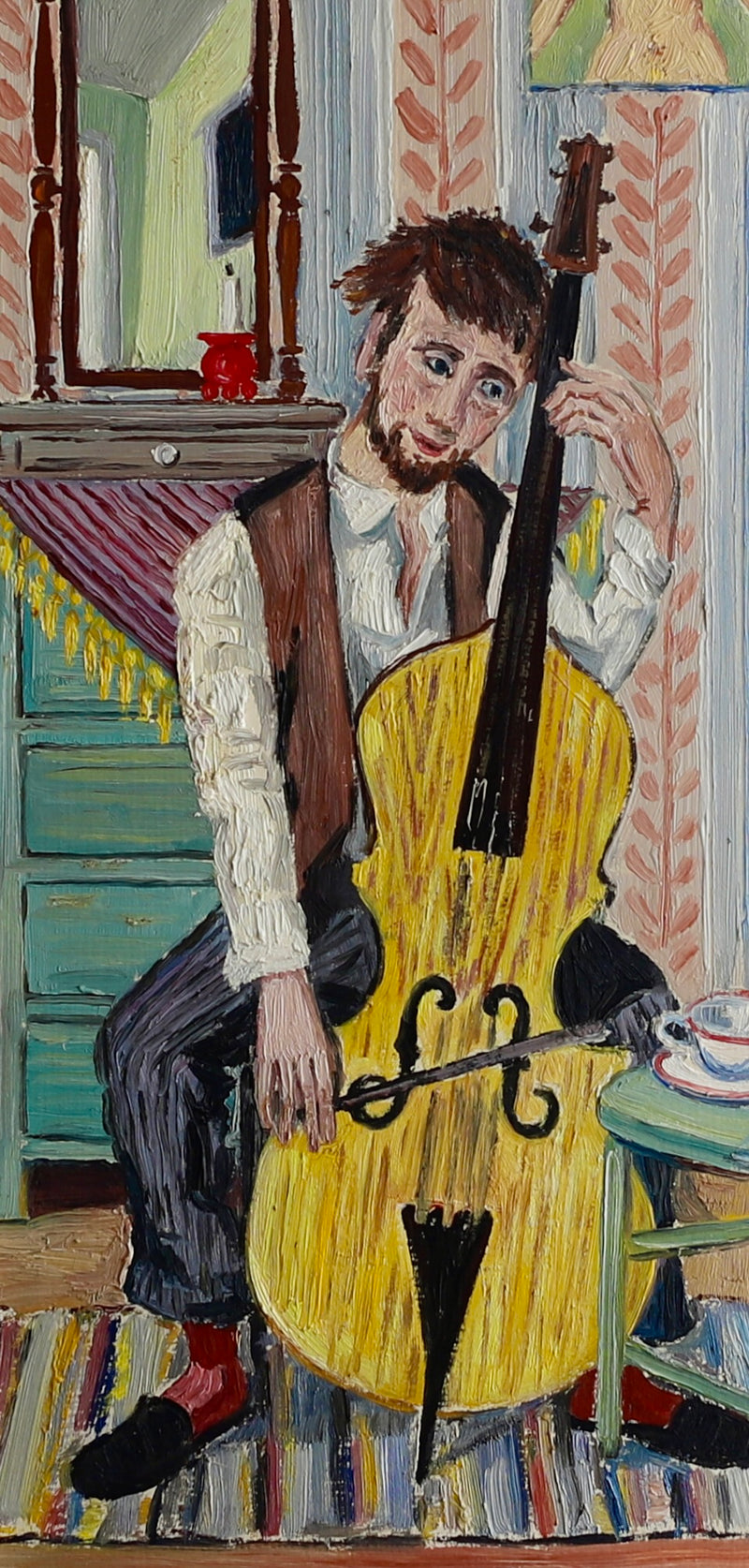The Evolution of Art: A Comprehensive Overview to Figurative Oil Painting
The Evolution of Art: A Comprehensive Overview to Figurative Oil Painting
Blog Article
The Duty of Emotion and Expression in Figurative Oil Painting: A Thorough Analysis of Subject and Composition
The interplay of feeling and expression in metaphorical oil painting functions as a critical lens where one can take a look at the complex connection between topic and composition. Artists harness various methods, from shade option to brushstroke characteristics, to cultivate psychological vibration within their works. This nuanced orchestration not just shapes visitor perception yet likewise invites a much deeper query into exactly how these aspects integrate to mirror the intricacies of human experience. As we discover this abundant surface, one need to consider how particular study light up the broader effects of these imaginative choices.
Understanding Feeling in Art
Feeling in art serves as a powerful avenue for expression, enabling musicians to convey intricate feelings via their job. In figurative oil paint, this psychological depth is often represented through the representation of the human figure, capturing the subtleties of human experience. The choice of topic, color palette, and brushwork all contribute to the emotional vibration of a piece.
Artists often bring into play personal experiences, social concerns, or universal styles to stimulate feelings in the customer. As an example, a picture may show susceptability, while a dynamic number in activity can symbolize liberty or turmoil. These psychological strings attach the viewer to the artwork, promoting a discussion that goes beyond the visual medium.
Moreover, the interplay between light and shadow can amplify emotional strength, assisting the visitor's look and attracting interest to certain components within the make-up. Making use of structure in oil painting additionally adds layers of complexity, inviting a tactile response that enhances the psychological experience. On the whole, recognizing feeling in art is critical for valuing the subtleties that define figurative oil painting, as it changes plain depiction right into an extensive exploration of the human condition.
Crucial Element of Composition
In the world of metaphorical oil paint, the structure acts as the underlying framework that arranges aesthetic components and improves the emotional story. Essential components of composition consist of equilibrium, contrast, centerpiece, and rhythm, each contributing to the overall influence of the artwork.
Balance describes the circulation of visual weight within the paint, which can be accomplished via asymmetrical or in proportion arrangements. A well-balanced composition gives stability, allowing the customer to involve with the piece harmoniously - figurative oil painting. Comparison, on the other hand, entails comparing different components, such as light and dark or warm and amazing shades, to direct the viewer's eye and stimulate emotional responses
The focal point is crucial, as it guides focus to the most significant component of the paint, usually highlighting the psychological core of the narrative. Via strategies like color saturation or placement, musicians can stress this area efficiently. Rhythm pertains to the rep of elements, producing a feeling of activity and flow throughout the make-up. By masterfully integrating these crucial elements, musicians can craft psychologically resonant and engaging metaphorical oil paintings that mesmerize and engage their target market.
Subject and Its Effect
Topic plays a pivotal role in figurative oil painting, as it not only functions as the foundation for the narrative but additionally shapes the viewer's interpretation and psychological engagement with the artwork. The option of subject-- be it a solitary figure, a group dynamic, or a thematic depiction-- directly influences the psychological ambience communicated to the target market.

For instance, pictures usually stimulate personal links, revealing the intricacies of human expression and personality, while scenes depicting public activities can develop a sense of belonging or nostalgia. The historic and cultural context of the subject matter enriches the visitor's understanding, prompting much deeper reflections on social norms, worths, and the human problem.
Different subjects likewise generate varying degrees of interaction; a dramatic dispute depicted with numbers in stress may evoke feelings of anxiousness or compassion, while peaceful landscapes can invoke harmony and reflection. Ultimately, the effect of subject in figurative oil paint is profound, as it works as a conduit for psychological vibration, guiding the audience's feedback and analysis, and fostering a connection between the artwork and the viewer. This interplay is necessary for the successful communication of the artist's intent.
Methods for Stimulating Feelings
The efficiency of metaphorical oil paint in sharing feelings is dramatically affected by the strategies employed by the musician. Among one of the most important techniques is making use of shade concept, where the tactical selection of colors can evoke certain emotional actions. Cozy shades, such as oranges and reds, usually evoke sensations of interest or aggressiveness, while cooler tones like blues and environment-friendlies often tend to stimulate calmness or sadness.
One more vital technique is the control of light and shadow, called chiaroscuro. This method enhances the three-dimensionality of numbers, developing significant contrasts that can intensify emotional depth. The placement of light can guide viewers' feelings, highlighting particular aspects of the composition.
Brushwork also plays an important role; loose, expressive home strokes can share energy and spontaneity, whereas smoother strategies could suggest harmony or accuracy. Furthermore, the arrangement of subjects within the make-up can affect emotional effect. Close closeness can recommend affection, while distance may indicate seclusion.
Inevitably, the mix of these techniques allows musicians to craft stories that resonate with the customer, transforming a plain aesthetic experience right into an expressive psychological journey. - figurative oil painting

Case Researches of Noteworthy Works
Analyzing remarkable works of figurative oil painting reveals just how various techniques are used to evoke effective feelings. One exemplary instance is Edvard Munch's "The Scream," where the distorted number and swirling history share existential fear. Munch's use of shade-- deep blues and vivid oranges-- intensifies the psychological influence, showcasing how scheme selections can shape visitor experience.
One more considerable work is Pablo Picasso's "Les Demoiselles d'Avignon." Here, bold brushstrokes and fragmented kinds reflect a troubled psychological landscape, challenging typical depictions of the female number. Picasso's innovative structure not just records the customer's attention however also welcomes contemplation on motifs of identity and sexuality.
In Addition, Frida Kahlo's "Both Fridas" provides an emotional expedition of duality and self-identity. The different figures, linked by a shared heart, exemplify Kahlo's emotional deepness and personal story. figurative oil painting. Her thorough interest to information and symbolic aspects offer to involve visitors on a visceral degree
These study underscore the extensive link in between feeling and composition in figurative oil painting, exposing how artists harness strategy to communicate intricate feelings and narratives that resonate across time and culture.

Conclusion
To conclude, the interaction of feeling and expression in figurative oil paint significantly boosts the audience's experience and analysis of the artwork. With a mindful choice of subject and compositional methods, musicians share extensive narratives that reverberate on both global and personal levels. The application of color chiaroscuro, theory, and brushwork more intensifies emotional depth, changing each canvas right into an effective reflection of the intricacies of the human experience.
In figurative oil painting, this psychological depth is usually represented with the representation of the human figure, recording the nuances of human experience.In addition, the interplay between light and darkness can amplify emotional strength, assisting the viewer's look and drawing interest to particular elements within the structure. The use of read what he said structure in oil painting better adds layers of complexity, inviting a tactile reaction that boosts the psychological experience.The focal point Read More Here is crucial, as it guides attention to the most considerable part of the paint, frequently highlighting the emotional core of the narrative. Eventually, the influence of subject issue in figurative oil paint is extensive, as it offers as an avenue for emotional vibration, guiding the visitor's action and analysis, and promoting a link between the viewer and the art work.
Report this page